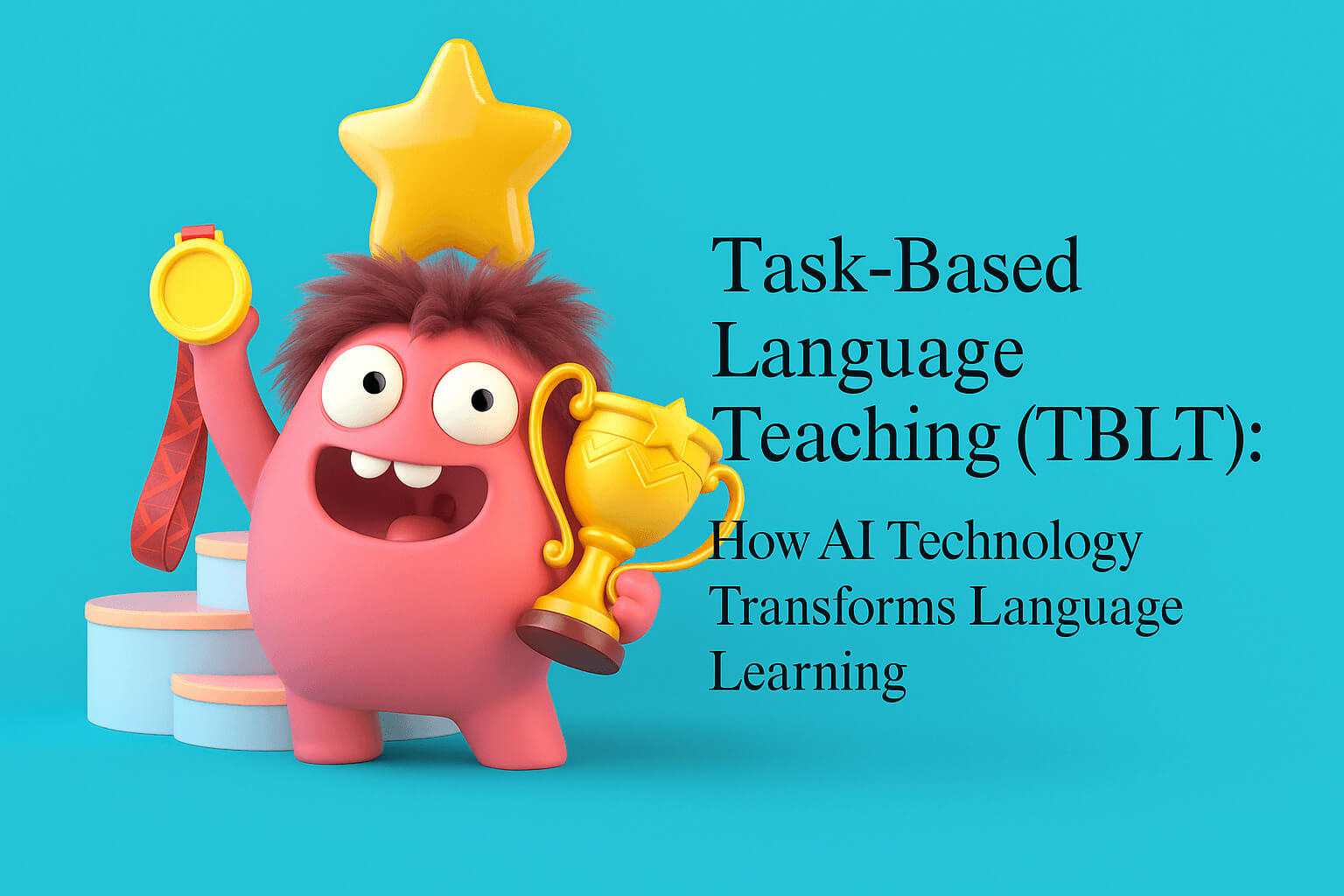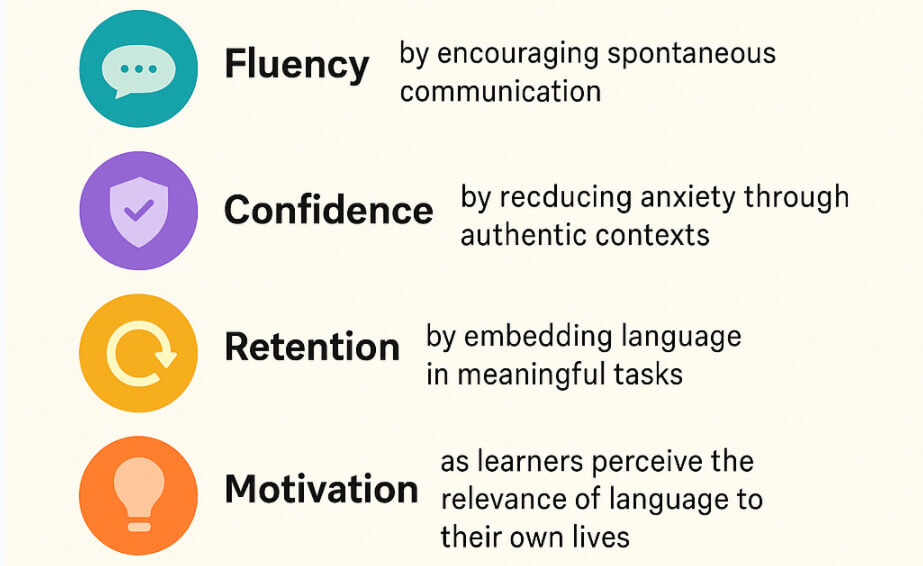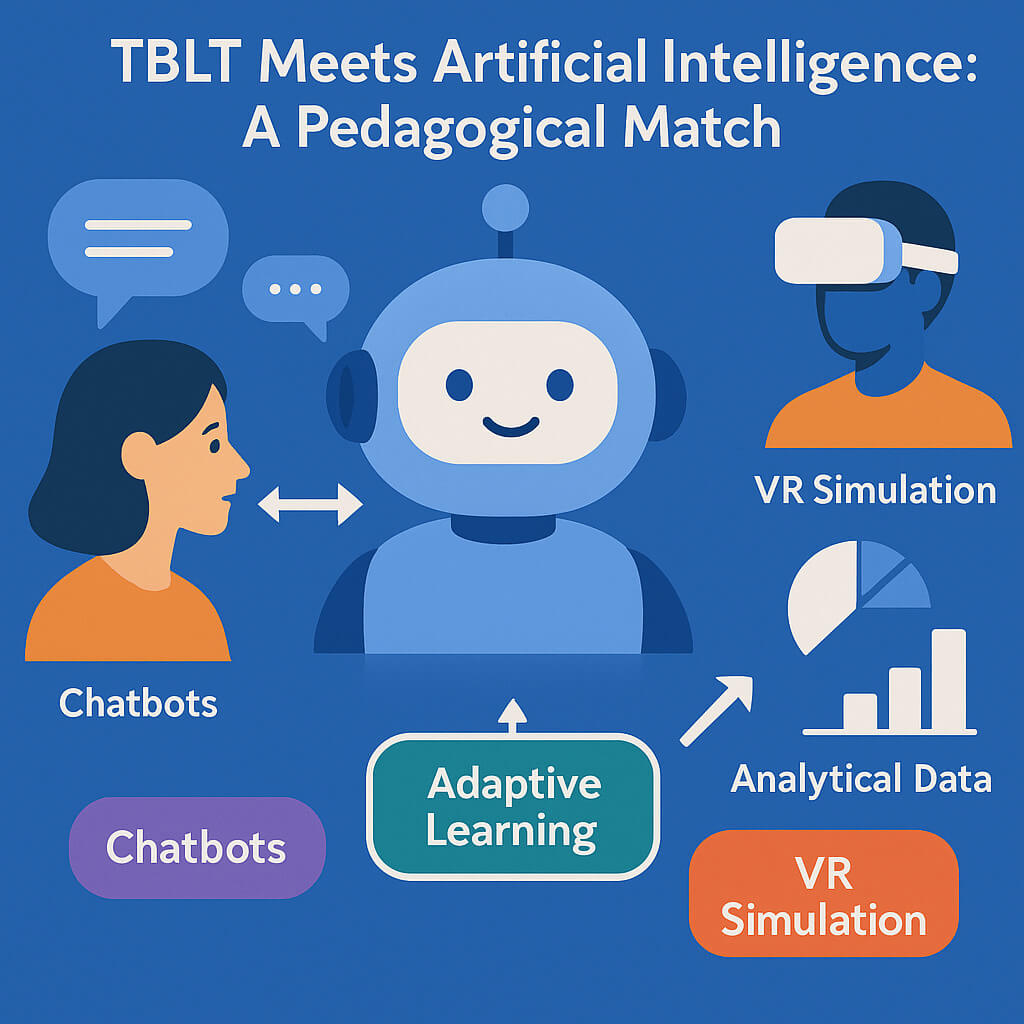
The TBLT Revolution: From Grammar Drills to Real Communication
Since the 1980s, Task-Based Language Teaching (TBLT) has revolutionized second language pedagogy. Unlike traditional approaches focused on grammar drills and isolated vocabulary lists, TBLT emphasizes purposeful communication. Learners engage in authentic tasks—like negotiating prices, planning trips, or writing reviews—all while using the target language in meaningful ways (Ellis, 2003).
TBLT is not simply about adding variety to lessons; it is grounded in the goal of enabling learners to use language to achieve real-world outcomes. According to Ellis (2003), a task should engage learners in meaning-focused interaction rather than eliciting pre-learned linguistic forms. This principle shifts the focus from correctness to communication, fostering the kind of interaction that supports long-term language development.
1. The Philosophy Behind TBLT: Why It Works
This shift is more than methodological—it is philosophical. TBLT aims to cultivate:
- Fluency, by encouraging spontaneous communication;
- Confidence, by reducing anxiety through authentic contexts;
- Retention, by embedding language in meaningful tasks;
- Motivation, as learners perceive the relevance of language to their own lives (Dörnyei & Ushioda, 2011; Carless, 2007).

In contexts where immersive environments are limited, TBLT fills the gap by simulating real-life language use. This makes it particularly valuable in second language (L2) classrooms, preparing learners not just for exams, but for actual communicative competence in global settings.
2. TBLT Meets Artificial Intelligence: A Pedagogical Match
With the advent of artificial intelligence, TBLT has found a powerful ally. Chatbots, adaptive learning platforms, and VR simulations now allow learners to complete real-world tasks with instant feedback and dynamic scaffolding.
Chapelle and Sauro (2020) argue that AI enhances the authenticity of task-based interaction by adapting content and complexity based on learner input. In this model, AI functions as both a conversational partner and a personal tutor, offering the kind of tailored support that teachers alone may struggle to provide in real-time. Moreover, AI supports task sequencing. As Van Merriënboer and Sweller (2005) explain, sequencing tasks by cognitive complexity prevents overload and facilitates deeper learning. With analytics, AI systems can guide learners through a progression of tasks calibrated to their evolving proficiency.

3. The Future: TBLT 2.0 with AI
Looking ahead, researchers envision a tech-enhanced TBLT ecosystem that blends pedagogy with emerging technologies:
- Immersive VR environments for situated task practice (González-Lloret & Ortega, 2014);
- Mobile platforms offering on-demand, task-based experiences with real-time feedback;
- Blended models that integrate AI-generated tasks with classroom reflection (Ellis, 2017). By combining authentic communication, task complexity, and responsive technologies, TBLT and AI together can deliver a transformative language learning experience—interactive, individualized, and deeply engaging.
Talkit: Pioneering TBLT 2.0 in Practice
Talkit exemplifies this vision of AI-enhanced TBLT in action. The platform seamlessly integrates task-based methodology with cutting-edge AI technology to create immersive, authentic language learning experiences. Through intelligent conversation partners, adaptive task sequencing, and real-time feedback mechanisms, Talkit transforms theoretical TBLT principles into practical, engaging learning journeys.
By leveraging natural language processing and machine learning algorithms, Talkit provides learners with:
- Dynamic task generation tailored to individual proficiency levels
- Contextual feedback that supports both accuracy and fluency development
- Authentic scenarios that mirror real-world communication challenges
- Personalized learning paths that adapt to each learner's progress and interests
In essence, Talkit represents the successful marriage of pedagogical theory and technological innovation, demonstrating how TBLT principles can be enhanced and scaled through AI to deliver truly transformative language learning experiences for the digital age.